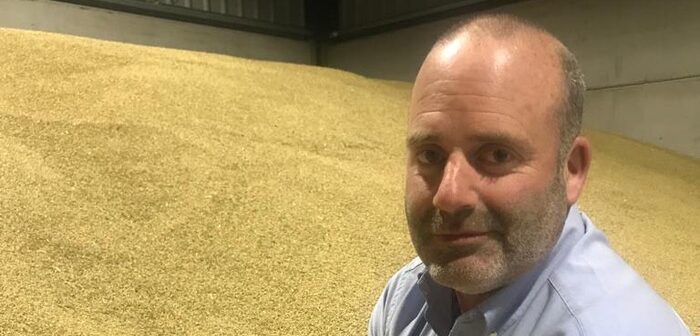Now firmly established on the AHDB recommended list (RL) as one of the leading 2-row winter feed barleys, Bolton is living up to its reputation as one of the most consistent, high-yielding, and straightforward varieties in its class, posting average yields of 9.4t/ha for farmer Tim Booth of JN Booth and Sons, based near Swineshead in Lincolnshire.
Mr Booth, who annually grows 404ha of arable crops including winter wheat, oilseed rape and winter barley on a wide range of different soil types, only decided to bring winter barley back into his rotation 2 years ago when looking to widen his rotation to include a good entry crop for early drilled oilseed rape.
However, following his positive experience of growing Bolton this year, allied to an excellent yield performance from another Elsoms 2-row winter feed variety (Lightning) in 2022, he now plans to keep winter barley in the farm’s rotation for the foreseeable future and drill Bolton again this autumn for the 2024 harvest.
Excellent early vigour
Mr Booth says: “Having achieved a very high yield with Lightning last year the decision to go with Bolton, a similar 2-row feed variety from the same breeder, seemed a no-brainer and we drilled 16ha of the crop on October 11th, across 3 fields of mainly grade 2 land varying from light silt to heavy clay soils. As with Lightning, Bolton showed excellent early vigour, competing and tillering out well to smother our major weed burden of blackgrass. With no major weather issues or hard frosts to knock it back, the crop was already at the 4-5 tiller stage as we went into the winter.
“Following a mild winter, we applied 300kg/ha of fertiliser across 2 splits, on February 24th and then on March 27th, coincidently the same application date as our T1 spray in a 4-spray fungicide program. Taking a belt and braces approach, we built the program mainly around pyraclostrobin + fluxapyroxad, chlormequat and prothioconazole with trinexapac-ethyl applied as a PGR. However, in what proved to be a low-pressure disease year, a 3-spray approach would have been fine given that Bolton was agronomically very easy to manage.
“As we went through the spring and into early summer we saw no disease signs, and the small amount of brown rust that we did see in our winter wheats didn’t appear in the Bolton crop at all. The only negative that I recall was a slight yellowing of the crop following heavy rain in March and April, but that sorted itself out once we got into May.
“Harvesting on July 26th, average yields were well over 9t/ha with the grain samples I’ve seen so far looking very good. Although Bolton hasn’t really been tested on disease resistance this year, it looks robust, certainly standing well during heavy rain and windy conditions prior to harvest, giving the impression that it’s very resistant to lodging. Producing a lot of stiff straw, and with no major difference in yield performance on either light or heavy ground, it could well be a good variety for a mixed farm” concludes Tim.
Consistent performer
Supporting Mr Booth’s on-farm evaluation of Bolton, Elsoms head of technical, George Goodwin, isn’t surprised by his positive feedback, and sees a pattern emerging from other growers who have found Bolton to be an incredibly consistent performer in a wide variety of growing conditions.
Mr Goodwin says:” With a treated yield of 105% of controls Bolton seems particularly well suited to the east and, with a very solid disease package including a 6 for mildew, a 6 for brown rust and a 5 for net blotch plus the added protection of built-in resistance to Barley Yellow Mosaic Virus (BYMV) it offers growers very solid all-around disease resistance. It’s also worth highlighting that with an untreated yield of 86% it’s also ahead of many other 2-row winter feed barleys on untreated yield, including KWS Tardis.
“The winter hardiness of Bolton is another positive trait that I’ve seen from recent on-farm reports and that should give prospective growers the confidence to drill it in early Autumn, allowing it to reach the 5-tiller stage by December. Having assessed many grower reports on Bolton over the last 2 years, it’s certainly realistic to view the variety as one of the most consistent performers on the current RL” he confirms.




